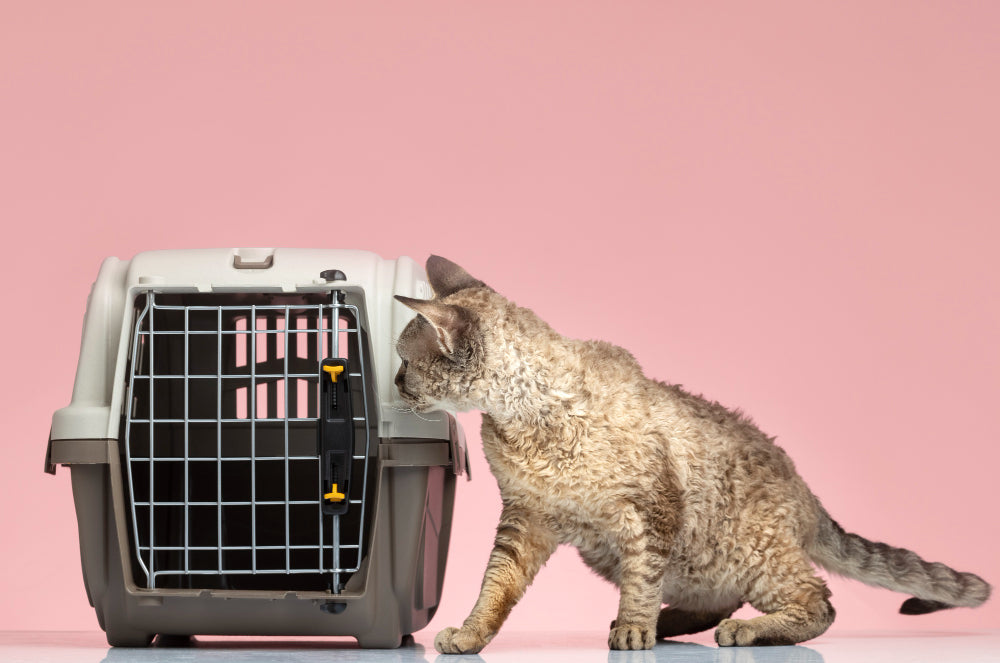
New dog or puppy? Here's how to choose the right dog food for your dog!
, by Michael van Wassem, 8 min reading time

, by Michael van Wassem, 8 min reading time
Choosing the right food for your dog can be overwhelming, especially if you're getting a puppy for the first time or adopting a dog from a shelter. The food you choose plays a crucial role in your dog's health, energy, and overall well-being. This blog will tell you everything you need to know to make the right choice.
Several types of dog food are available, each with unique benefits. It's important to understand the options available and what they mean for your dog:
Crunchy pieces:
Benefits: These kibble are firm and crunchy, which helps reduce plaque and tartar. They have a long shelf life, are easy to portion, and are often an affordable option. Furthermore, they contain a balanced mix of proteins, fats, and carbohydrates.
Disadvantages: For some dogs, crunchy kibble can be too dry, especially if they don't drink much. Additionally, they may be less suitable for dogs with sensitive stomachs.
Suitable for: Dogs that have no difficulty chewing and have a standard energy level. Example: An adult Labrador that goes for a long walk daily and has healthy teeth.
Pressed kibble:
Advantages: Extruded kibble retains more nutrients because it is produced at a lower temperature. It breaks down in the stomach, which ensures better digestion. It is often more compact and nutritious than crunchy kibble.
Disadvantages: Compressed kibble is usually a bit more expensive and may be less appealing to picky eaters.
Suitable for: Dogs with sensitive digestion or those who benefit from a higher-nutrient diet. Example: A German Shepherd with a sensitive stomach.
Wet food:
Advantages: Wet food contains a lot of moisture, which is ideal for dogs that don't drink much. It often has a strong smell and taste, making it suitable for picky eaters. It is soft and therefore suitable for dogs with dental problems.
Disadvantages: It does not help reduce plaque and has a shorter shelf life after opening. Furthermore, it is less economical for daily use.
Suitable for: Dogs that are picky eaters or need extra hydration. Example: An older Chihuahua with dental problems and a small appetite.
Raw food (BARF - Biologically Appropriate Raw Food):
Benefits: Raw food is in line with the natural diet of dogs and can result in a shiny coat, strong teeth, and high energy levels. It contains no unnecessary fillers or artificial additives.
Disadvantages: It requires careful preparation and storage to prevent bacterial contamination. Furthermore, it is more expensive and time-consuming than other types of feed.
Suitable for: Active dogs without health problems. Example: A Border Collie that trains intensively daily and has a shiny coat.
Diet food:
Benefits: This food is specially formulated for dogs with specific health problems, such as obesity, allergies, or kidney problems. It can help achieve health goals and improve the dog's overall condition.
Disadvantages: It is often more expensive and usually requires a prescription from a veterinarian.
Suitable for: Dogs with medical needs. Example: An overweight French Bulldog that needs a diet to reach its ideal weight.
Grain-free food:
Benefits: This food is grain-free and ideal for dogs with grain allergies or intolerances. It contains alternative carbohydrates, such as sweet potato, which contribute to better digestion and skin health.
Disadvantages: Grain-free food can be more expensive and isn't always necessary for dogs without grain intolerance.
Suitable for: Dogs with allergies or sensitive skin. Example: A Golden Retriever with itching caused by grains in standard food.
Hypoallergenic food:
Benefits: Hypoallergenic food often contains a single protein source, such as duck or salmon, which minimizes the risk of allergic reactions. It is specially formulated to reduce digestive problems.
Disadvantages: It is often more expensive and may be less palatable to picky eaters.
Suitable for: Dogs with food allergies or chronic digestive problems. Example: A Beagle with a chicken allergy.
Vegetarian or vegan food:
Benefits: This food is an alternative for dogs that cannot or should not eat animal products. It contains all essential nutrients and is often made from high-quality plant-based ingredients.
Disadvantages: It is not suitable for all dogs and requires careful monitoring to ensure a balanced diet.
Suitable for: Dogs with specific food intolerances. Example: A dog with an allergy to animal proteins.
Age of your dog:
Puppies: Puppies require special nutrition that is high in energy, protein, and calcium to support their rapid growth and development. Look for food specifically labeled for puppies and pay attention to the recommended daily amount.
Adult dogs: For adult dogs, a balanced diet is important. Choose food that meets their daily energy needs without causing overfeeding.
Seniors: Older dogs often need fewer calories and may benefit from food with extra support for joints and the immune system.
Activity level:
Active dogs, such as working or sporting dogs, need a diet rich in high-quality proteins and fats to meet their energy needs. For less active dogs, food with a lower calorie content is better suited to prevent overweight.
Size and breed:
Large breeds need food that is specially formulated to support their joints and balance their growth. Small breeds, on the other hand, need smaller kibble that is easier to chew and better suited to their jaw size.
Health:
For dogs with health problems, such as sensitive stomachs, skin problems, or allergies, it's important to choose food that addresses these specific needs. If in doubt, consult a veterinarian.
Preference and Pickiness:
Some dogs are naturally more picky eaters. In that case, wet food, raw food, or food with a strong taste and smell can be a good choice to ensure they eat enough.
Fillers: Avoid food containing cheap fillers such as wheat and corn. These add little nutritional value and can cause digestive problems in some dogs.
Unknown ingredients: Avoid food with vague descriptions such as "meat by-products." Opt for transparent ingredient lists.
Excessive additives: Food with a lot of artificial colors, preservatives or sugars is not suitable for a healthy diet.
Read the packaging: Always check the composition, nutritional value, and any additives. Choose food that meets your dog's specific needs.
Start with a small amount: Begin with a small bag or package when trying a new type of food. This will help you see how your dog reacts before you buy a larger supply.
Seek advice: Consult your veterinarian for nutritional advice tailored to your dog's age, health, and lifestyle.
A sudden change in food can lead to stomach problems. Make the transition gradual:
Mix the new food with the old food in a ratio of 25% new to 75% old.
Increase the amount of new food daily and decrease the amount of old food.
After 7-10 days, you can completely switch your dog to the new food.
Overweight dogs: Choose a diet food that contains fewer calories and fat, but still provides all the essential nutrients.
Dogs with sensitive stomachs: Easily digestible food or hypoallergenic food can help reduce digestive problems.
Puppies: Provide food that is specially formulated for growing dogs, with sufficient protein, calcium, and fatty acids.
Choosing the right food for your dog is essential for their health and happiness. Take the time to research what best suits your dog's age, activity level, health, and preferences. Remember that no two dogs are alike – it may take some experimentation to find the perfect match.


